Growing your own chillies and peppers from seed is such a joyful and rewarding activity and it’s always an exciting time here at the chilli farm. This is partly because it signals the start of the new growing season for us but also the excitement of the new varieties and hybrids to be grown, and waiting and watching for those little green hooks to appear through the surface and open up to greet the light.
I’m asked about propagating and growing chillies a lot so I decided to write a series of guides I could refer people to and make available for everyone. I’ll start by giving you some general but nonetheless very useful information followed up by some practical guidance. As is with many different undertakings there are often many different ways to achieve similar results. I’ll stick to what would be considered ‘best practice’ or in other cases, the way I like to do it. The guide is intended to give you a firm base of knowledge from which to work from and to return to when experimentation goes wrong.

When deciding to start chilli seeds it’s best to start them early in the year so that you have adequate ripening time and can gain better overall yields. So deciding what your aims are will help you to know when to start and what equipment you will need. In general it pays to start your seeds early but this can be left later if you have the required conditions combined with more advanced growing techniques such as hydroponics. A good rule of thumb when intending to grow in soil or a pot based watering system like Autopot would be:

Firstly you will need a warm place, something to sow the seeds in and then light for when the seeds sprout. Let us look at each aspect in turn. Chilli seeds germinate best at 26-28C. They can germinate at lower temperatures but it can take longer, germination can be more sporadic and the rate reduced. It’s common for growers to use a propagator for germination where heat can be added if required. If you have a warm space, use an unheated propagator. For cooler locations you can use a heated propagator and ideally one that you can control the temperature of. Sometimes it is preferred to use a growing tent to house the propagator and light where you can control the temperature and environment more easily and economically. Growing tents come in a wide range of makes and sizes from propagator size to room size. You will need to continue growing on your chilli plants once they have germinated so pick a tent that will suit your requirements at all stages. It will need to house your propagator at first and then later, pots and trays.
You will need to sow your seeds into something and there is quite a wide choice available. Now would be a good time to say that I don’t believe it is good practice to use tissue paper for starting seeds. Generally there is no need to do this or any advantage in doing so and it adds another level of handling that is unnecessary. There is not one single best option to sow your seeds into, more a case of personal preference and what suits you best. Your options for seed sowing in to are: preformed plugs, cell trays, pots or seed tray.
Preformed plugs are great and come made from different mediums and in different formats but on the whole they are all used in the same way. Some of these are Root Riot, Jiffy 7, Grodan rockwool and all are available with a plastic holding tray or supplied loose.



Cell trays are trays with moulded sections the size of plugs and can be filled using a medium of your choosing such as a peat based compost, peat-free compost, coir coco fibre, perlite and vermiculite and various combinations of the aforementioned. Cell trays are usually made from plastic and now you can get ones that are made from paper fibre – a bit like egg boxes but without any dyes or chemicals in. With fibre cells, you simply break off a cell and plant the whole thing in to the next pot when your seedlings are ready. Their roots grow through the fibre walls and it all rots down naturally. Fibre pots are also available and used in the same manner.




The same method applies for small pots or a seed tray. I’m not a fan of seed trays for capsicum seeds. This is because pricking out adds a degree of stress to the seedling and that can sometimes be non-beneficial. Beginners often opt for small pots as this can sometimes be more familiar and easier to look after for the less experienced. If you are planning to grow on in soil you can start your seeds using any method. If you are going to grow your plants in soilless medium or in a hydroponic system then start with preformed plugs or small pots of inert medium like coco or perlite/vermiculite mix.
This is how I prepare for seed planting:
Preformed Plugs: Some plugs need some pre-treatment before sowing. Jiffy 7 ‘s are peat plugs encased in a very fine mesh that have been pressed into a flat, dry disc that needs to be soaked so they expand to usable size. This is always a fun bit.





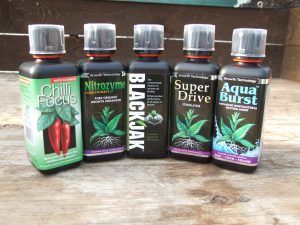
It is often common practice to add a few extras to the soaking water so there are some goodies waiting for the plants as roots start to emerge, right from the start. My usual soaking mix contains ¼ strength Chilli Focus, Nitrozyme seaweed extract, Blackjack humic & fulvic acid, Superdrive vitamin supplement and Aquaburst wetting agent all diluted in to clean filtered and de-chlorinated water. Place the dry discs into a tray and fill to approximately 20mm with solution. Don’t worry if the plugs get too wet as a gentle shake can shed the excess solution. I would do the same for Root Riot except you don’t have to wait for them to soak up the solution. These bio spongy blocks are just like little sponges and can be treated as such, a quick soak and a squeeze and they are ready to go. Rockwool blocks need to be soaked in a slightly more acidic solution to counteract the alkaline rockwool. These are horticultural rockwool blocks, not loft insulation which is glasswool and non-wettable. Soak rockwoll in a solution that has a pH of 5.5. This will bring the rockwool to a pH of 6.5. In all other cases use a solution pH of 6.5. Your plugs are ready to go into your propagator.
Cell trays, pots or a seed tray: fill them with growing media using a medium grade sieve to remove any lumps as required. If using general-purpose compost add 10% perlite to the sieved mix before filling cells or pots. Water them in before sowing seeds. The best way to water your trays and pots is to stand them in a shallow garden tray and fill to a depth of approximately 20mm with solution and allow to soak evenly and well. You can use the same soaking mix as mentioned above. Once soaked remove the tray or pots and allow to drain briefly before placing in the pre-prepared propagator. If using fibre cell trays, stand them in the pre prepared propagator before soaking and water in from the top well. These are hard to handle when wet but not an issue later on.
Have a clean, pre-prepared propagator ready. This can be a heated or unheated type, next put in a layer of perlite approx. 20mm deep evenly across the whole surface of the tray. Pre wet the perlite first with water to avoid dust. The perlite wants to be wet but not standing in water. The propagator is now ready for use. Make sure your plug tray, cell tray or pots have holes in the bottom of each cell before placing them on top of the perlite inside the propagator. Fibre cells and pots do not require holes because they are absorbent and will act as a wick. Keeping them moist at all times is important and will allow roots to grow through them unrestricted. The perlite inside the propagator acts as both a wick and as a humidifier. Instead of perlite you can use capillary matting cut to size or Cocomats by Autopot.
Sowing seeds: With a small dibber or flat end of a pencil (the eraser-part is perfect) make a small indentation approx. 2-3mm deep in the center of each cell or pot. Place one seed in to each indentation and cover with a sprinkle of fine grade vermiculite covering the seed and surface of the cells or pot thinly. Now mist the vermiculite with water using a hand sprayer with a fine mist to wet it well. The cells, pots or plugs have been pre-soaked so no further watering is required. Put the clear lid on and place the propagator in to its desired location. You should keep the temperature at a constant 26-28c during germination. As soon as the first sign of germination can be seen the propagator should be placed in good light.
The use of a propagator lid is not essential for seed germination but it can help in the earlier stages with plugs and cell trays to stop them from drying out too quickly. It can help maintain a constant temperature in the germination phase and also creates a preferable humid environment for capsicums and helps the emerging seedling shed its seed casing. After germination the vents can be gradually opened to acclimatise the seedling to lower humidity and are also useful to help regulate the temperature inside the propagator. You can also use side vents if your propagator has them, like the excellent Vitapod from Nutriculture. If you don’t have side vents you can create a gap between the lid and tray of the propagator. For the enthusiastic or large scale grower look no further than the AutoPot Easy2Propagate units that measure 120cm x 55cm x 28cm and feature adjustable top vents and unique bottom vents. The use of aeroponic propagators for starting seeds is much less common but still possible if you fancy trying aeroponics. However it’s fair to say that these systems are best left for rooting cuttings and starting seeds in the manner described above is still the preferred way by most, even if you plan on growing in an aeroponic system at a later date.
Light: Your seedling will need good light from the moment it emerges from the growing medium. So as soon as you see the first seed pop you will need to use artificial light or natural light in the right circumstances. Don’t worry about the other seeds that have not yet germinated as these are covered by a layer of vermiculite and will germinate just the same and are hopefully right behind the first one. Sometimes it’s a good idea to germinate with the light on if you need to keep the propagator warm in a cool location. So, what light to use? Well, if you are growing indoors and in a grow tent, and even in a conservatory or greenhouse early in the season you will need an artificial light source, often referred to as ‘grow lights’, for good, strong, early growth. For the propagation of seeds and cuttings high powered lights are not required and low powered efficient lighting can be used instead offering many advantages to the grower at this stage of the plants development. I find that 16-18 hours of light per day is great and grows strong healthy plants that don’t stretch. If you are supplementing natural light you can run the light at the start or end of each day, or both, to make a total of 18 hours. You can also use the light to brighten up those dull grey wintery days that are more frequent than not. I don’t want to lose sight of the fact that this article is about chilli propagation so I will keep this massive topic brief and on subject and leave the detailed discussion on artificial lighting for another article.
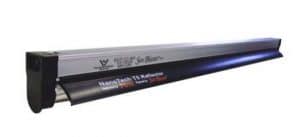 Fluorescent T5 is by far the most popular and multi-purpose form of propagation lights. These are fluorescent tubes of the T5 diameter often referred to as ‘strip lights and come in single strips with reflector and starter, like the SunBlaster units, or in canopies of multiple tubes such as the Maxibright T5 units. Most commonly these are all supplied with blue spectrum tubes, 6500k, as standard. Red spectrum tubes, 2700k, are available too. Both the Maxibright units and SunBlaster units use the high output (HO) version of the T5 tubes as these have a higher light output than the standard tubes length for length. T5 are extremely reliable, excellent value for money to purchase and run, and most importantly they grow great plants. T5s can be used on multi-level rack systems due to their slim design and cool running temperature. A single T5 will give a usable even spread of approximately 15cm at a height of 15cm down the length of the tube. It’s possible to cover more area but growth will start to become uneven. Because T5s run cool, plants can be grown close to the tubes but be wary of damage to touching leaves and the lack of humidity directly around the tubes. Replacement tubes are widely available and reasonably cheap – My advice would be to always choose a quality branded replacement tube such as Sylvania, Osram or Phillips.
Fluorescent T5 is by far the most popular and multi-purpose form of propagation lights. These are fluorescent tubes of the T5 diameter often referred to as ‘strip lights and come in single strips with reflector and starter, like the SunBlaster units, or in canopies of multiple tubes such as the Maxibright T5 units. Most commonly these are all supplied with blue spectrum tubes, 6500k, as standard. Red spectrum tubes, 2700k, are available too. Both the Maxibright units and SunBlaster units use the high output (HO) version of the T5 tubes as these have a higher light output than the standard tubes length for length. T5 are extremely reliable, excellent value for money to purchase and run, and most importantly they grow great plants. T5s can be used on multi-level rack systems due to their slim design and cool running temperature. A single T5 will give a usable even spread of approximately 15cm at a height of 15cm down the length of the tube. It’s possible to cover more area but growth will start to become uneven. Because T5s run cool, plants can be grown close to the tubes but be wary of damage to touching leaves and the lack of humidity directly around the tubes. Replacement tubes are widely available and reasonably cheap – My advice would be to always choose a quality branded replacement tube such as Sylvania, Osram or Phillips.
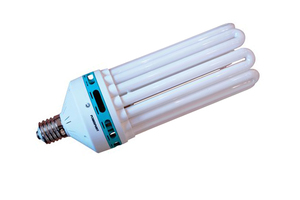
Compact Fluorescent Lamps or CFLs as they are referred to are probably best described, albeit incorrectly, as ‘giant energy-saver bulbs’. They are a cluster of U-shaped fluorescent tubes mounted vertically in a circle. The U-tubes are stuck together and mounted directly onto the starter unit with the E40 screw end on the other side. CFL grow lamps are widely available in wattages of 125w, 150w, 200w, 250w and 300w, but others do exist. Available in blue or red spectrum and some of mixed blue/red spectrum. Blue is the usual preferred colour for propagation and growing on. CFL lamps need to be screwed in to a purpose made reflector that plugs directly into the mains socket outlet and has an E40 lamp holder. A lamp holder and lead set can also be used to hang lamps vertically. Although a good light source, CFLs can be less reliable than other forms of lighting and because of their fragile design they are easy to break. If they do break of fail they are more expensive to replace because the tubes and starter together form a single unit and have to be replaced as such. The spread of light is less efficient due to the design configuration of the tubes and better, more even coverage can be gained by other forms of lighting for the same wattage used. A 300w CFL is not a small light for propagation and they are not as cool as you think, far from it. If you are looking at something that uses 300w of electricity you might want to consider other, better options.
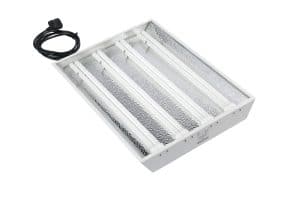 Fluorescent PLL in my opinion are a better choice than CFL. These are a 550mm long 55w double tube that plugs in at one end only. The other end is supported by a clip. As a grow light, these tubes are sold in a canopy either as a twin tube (110w) or quad tube (220w) unit with the tubes mounted side by side much like a T5 unit. The PLL tube is a high output fluorescent tube and available as a blue, mixed or red spectrum balance. In my experience the mixed are the better choice, colour code 840. Replacement tubes are reasonably cheap and cost a little bit more than T5 but not by much.
Fluorescent PLL in my opinion are a better choice than CFL. These are a 550mm long 55w double tube that plugs in at one end only. The other end is supported by a clip. As a grow light, these tubes are sold in a canopy either as a twin tube (110w) or quad tube (220w) unit with the tubes mounted side by side much like a T5 unit. The PLL tube is a high output fluorescent tube and available as a blue, mixed or red spectrum balance. In my experience the mixed are the better choice, colour code 840. Replacement tubes are reasonably cheap and cost a little bit more than T5 but not by much.
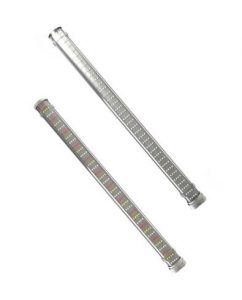 For the most part, LEDs are worth avoiding especially all the cheap rubbish you see on Amazon sold under the pretence as being suitable for growing plants or for ‘hydroponics’. Most of this is unreliable, remarketed general lighting that is falsely advertised, doesn’t do what is claimed and is not of the specification presented. It’s sold by foreign manufacturers and importers looking for any market possible with little or no product support. It wouldn’t surprise me if some of these items were a danger to use and a fire hazard. Among the vast array of detritus you can actually find some good, safe, well made and supported LED units that are reasonably priced and great for propagation. One such item is the TLED from Secret Jardin. These are multi-LED batons, 26 watts, 550mm long, 6500k colour temperature from 144 x Super Nova LEDs. These units are very reasonably priced, reliable and plants grow very well under them.
For the most part, LEDs are worth avoiding especially all the cheap rubbish you see on Amazon sold under the pretence as being suitable for growing plants or for ‘hydroponics’. Most of this is unreliable, remarketed general lighting that is falsely advertised, doesn’t do what is claimed and is not of the specification presented. It’s sold by foreign manufacturers and importers looking for any market possible with little or no product support. It wouldn’t surprise me if some of these items were a danger to use and a fire hazard. Among the vast array of detritus you can actually find some good, safe, well made and supported LED units that are reasonably priced and great for propagation. One such item is the TLED from Secret Jardin. These are multi-LED batons, 26 watts, 550mm long, 6500k colour temperature from 144 x Super Nova LEDs. These units are very reasonably priced, reliable and plants grow very well under them.
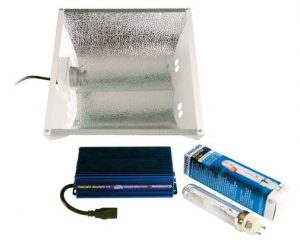 You might be under the impression that these excellent grow lights are too powerful for propagation or get too hot. Well, in some situations Metal Halide is an ideal choice and you might be surprised at how cool the lower wattage units can be. They are by far the best lights for growing on as the plants get bigger while waiting to go out into the greenhouse or outside, and if you are considering a CFL light unit then watt for watt metal halide is far superior Metal halide will cover larger areas than fluorescents, CFLs or LED lights and can be used for all stages of vegetative growth. Best of the bunch, and costing a bit more, is the Philips Daylight CDM 315w which produces near complete daylight spectrum, is really efficient, much cooler than HIDs of equivalent wattage and cheaper than any comparable LED (if there is such a thing). Your plants would choose this light! Look out for the Maxibright Daylight units as they offer the best value for money (half the price of other brand units), use all Phillips components and lamps, use remote digital ballast and have a good choice of reflectors to suit everyone.
You might be under the impression that these excellent grow lights are too powerful for propagation or get too hot. Well, in some situations Metal Halide is an ideal choice and you might be surprised at how cool the lower wattage units can be. They are by far the best lights for growing on as the plants get bigger while waiting to go out into the greenhouse or outside, and if you are considering a CFL light unit then watt for watt metal halide is far superior Metal halide will cover larger areas than fluorescents, CFLs or LED lights and can be used for all stages of vegetative growth. Best of the bunch, and costing a bit more, is the Philips Daylight CDM 315w which produces near complete daylight spectrum, is really efficient, much cooler than HIDs of equivalent wattage and cheaper than any comparable LED (if there is such a thing). Your plants would choose this light! Look out for the Maxibright Daylight units as they offer the best value for money (half the price of other brand units), use all Phillips components and lamps, use remote digital ballast and have a good choice of reflectors to suit everyone.
Your light needs to be suspended above the propagator which is reasonably straight forward in a grow tent or homemade growbox. Otherwise you might need to construct a frame to hang it from – a cheap free standing clothes rail can be good for this. Or if you want your plants on display you can opt for the GrowGarden.
Your seedlings won’t require any feeding until after potting on. Pot on when you see plenty of roots emerging through the sides and bottom of the plugs or cells. If you started in pots wait until you have plenty of roots. A good rule of thumb with any plant is to wait until the roots hold all of the soil or medium in the pot together and before you get white-walls of roots on the outer sides. Cover the pot with your hand, with the plant sticking up between your fingers, then turn it upside down and support in your hand and gradually lift up the pot. If the soil starts to crumble
Monday: 09:30 – 17:00
Tuesday: 09:30 – 17:00
Wednesday: 10:30 – 19:00
Thursday: 09:30 – 17:00
Friday: 09:30 – 17:00
Saturday: – Appointments Only (pm)
Sunday: – CLOSED
Monday: 09:30 – 17:00
Tuesday: 09:30 – 17:00
Wednesday: 10:30 – 19:00
Thursday: 09:30 – 17:00
Friday: 09:30 – 17:00
Saturday: – Appointments Only (pm)
Sunday: – CLOSED